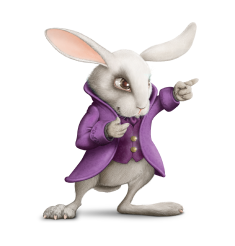
The Digital Revolution
The Digital Revolution – No End in Sight
The digital world has developed rapidly in recent years. Constantly evolving, it will undoubtedly present us with exciting innovations that far exceed the scope of our imagination, continuing to transform the world as we know it. Here are our top five game-changers to emerge from the digital world so far.
AR- Augmented Reality
A step up from VR (Virtual Reality), AR presents an improved version of our physical world, by incorporating vital, instructive information and capabilities – all enabled by the digital transformation.
AR can improve and enrich our lives in countless ways. If you wore AR glasses as you looked at the Eiffel Tower, they could immediately offer you to buy tickets to ride up it. If you have food allergies, you can program your AR glasses with the relevant details so that when you go to the supermarket, the glasses show a red X when you scan a product containing those allergens. If you’re looking in a mirror in a fashion store, the glasses can even show you how you would look in a certain pair of jeans you’re considering buying.
AR glasses can transform industry too. In the construction and repair of heavy machinery, for example, they can be used to help the on-site technician diagnose the cause of a fault, by analyzing the image and identifying any part that is worn out or broken. They can also enable the technician to share what they see in front of them with field experts offsite, to collaborate on how best to fix the problem.
NLP- Natural Language Processing
In the world of bots and digital comprehension of uniform language, NLP is used to enable conversations with devices: we tell them what we want and they reply with the information we need, or carry out the specific task requested.
Still in its infancy, NLP is already changing the way the digital world conducts business. True, bots are currently limited to dealing with simple queries, and can converse using only basic language. But, as developments continue to be made in NLP, bots will soon be able to handle sophisticated linguistics and provide assistance with wide-ranging demands. As human-to-bot conversation rates increase, consumers will benefit from a faster, more efficient service experience. Meanwhile, service providers and businesses will be able to use cutting-edge digital platforms to improve work-flow productivity, gaining efficiencies in information transfer through internal systems, problem reporting and solving and more.
Digital Workplace
A gap is widening between the innovative digital platforms and technologies we are using in our private lives – think Netflix, WhatsApp and Waze – versus the outdated systems and products available to us at work. This can make employees feel frustrated and demoralized by the inefficient use of their time in the workplace – they want to get more done, faster and often simultaneously.
That’s where the Digital Workplace comes in; a compilation of new work methods that produce work-efficiency and fruitful cooperation between employees, while allowing for information to be transferred easily and quickly. For example, in a smart office, a digital system could check your diary, know who you are going to meet and about what, and automatically bring up relevant documents and previous correspondence you need for the meeting.
Low Code
As organizations evolve and grow, so does the volume of their infrastructure and technical systems. Based on numerous developmental languages, they are designed to meet the different needs of different departments. Bringing it all together can be a struggle for the R&D departments tasked with coming up with innovations that keep everyone happy. Enter Low Code – an innovative way of developing complex systems with almost no coding. Using a visual interface, R&D personnel define various processes so that the entire workplace is managed through a single system, cutting the costs of development by up to 75%, as well as saving time and human resources.
IoT- the Internet of Things
The advent of IoT has changed traditional business models and enabled the development of a diverse range of new products and services, from smart home appliances, to large-scale systems such as enhanced water-management systems.
Consumers are beginning to expect this new level of connectivity as standard, so much so that today product developers prioritize this feature over other functionalities. It’s no stretch to suggest that, from now on, new technological products will almost always be designed to be IoT compatible.
These are just some of the ways in which the digital revolution has profoundly transformed, and continues to transform, the way we work, do business and live. What used to sound fantastical is becoming the norm, and you can be sure that today’s norm is just a launchpad for a whole new world of digital wonders.
Further details about our digital services and more are available at Matrix Digital .









